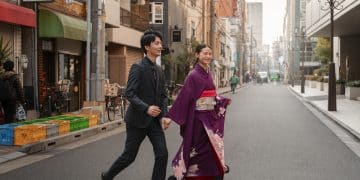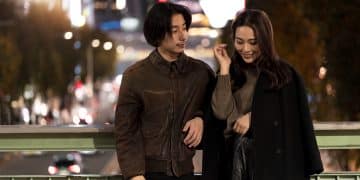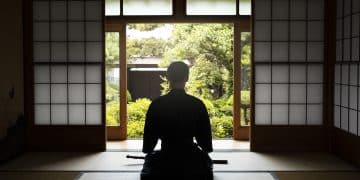10 Cultural Meanings Behind Your Favorite Dorama Food Scenes
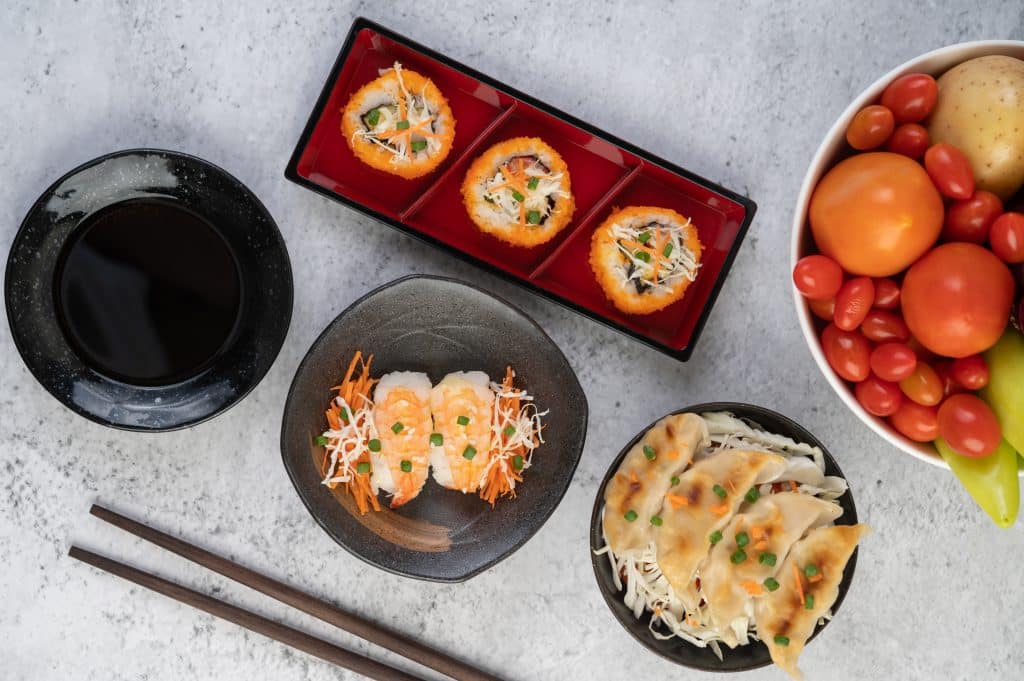
The Cultural Significance of Food in East Asian Dramas
More Than Just a Meal on Screen
Food scenes are among the most memorable cultural moments in many East Asian television dramas, or doramas. At first glance, these moments may seem like simple depictions of daily life—characters sharing a meal, savoring a quick snack, or preparing a favorite dish. However, in doramas, eating is rarely a casual act. Food is used as a powerful tool to express emotion, reveal character relationships, and build the social world of the story.
Deeper Cultural Values and Social Ties
Food in doramas often represent tradition, respect, and care. When a character carefully prepares a bento or invites another for ramen, it is not just about satisfying hunger. The cultural act of eating together reflects trust, intimacy, or the hope to bridge a gap between people. A silent meal between family members can express lingering tension, while a shared dessert might hint at a blossoming romance. These scenes reveal the importance of togetherness, consideration, and social order—values at the core of East Asian cultures.
The Layers Viewers Often Miss
Many viewers focus on the appetizing dishes and familiar eating rituals, but miss the deeper messages woven into these scenes. Who sits where at the table may tell us who holds authority in the group. The refusal or acceptance of food can signal more than individual taste—it can reveal family loyalty, unresolved conflict, or subtle rebellion. Even the foods served, from homemade lunches to street snacks, are chosen for their symbolism and the story they help to tell.
As we begin to explore the world of dorama food scenes, we find that every dish and gesture at the table holds clues to the larger narrative, inviting us to look beyond taste and smell, and discover the hidden meanings waiting to be uncovered.
The Language of Sharing: Communal Dining Rituals
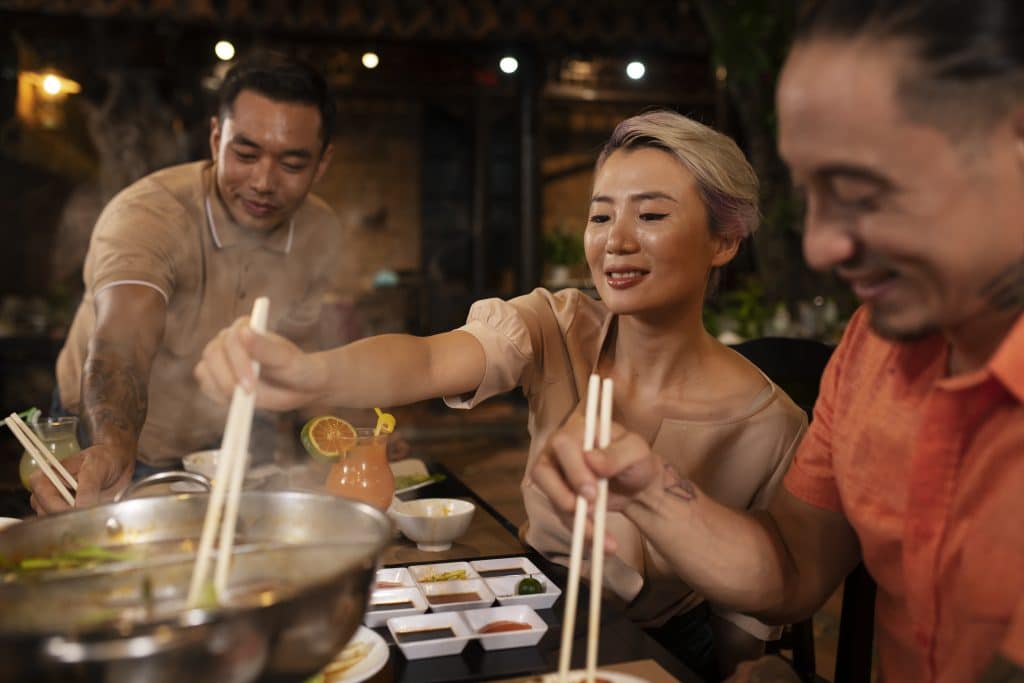
Sharing Food: A Symbol of Connection
Communal dining is at the heart of many East Asian drama scenes, and it’s rarely just a display of good food. Characters sharing from the same plates is a quiet ritual of trust and kinship. The act of reaching out for food together, sometimes even using the same utensils or dipping into a central pot, conveys a feeling of oneness. These visuals signal to viewers that the group gathered around the table is more than a collection of individuals—they are a collective, bonded through tradition and a cultural unspoken mutual understanding.
The Unspoken Order of Seating
Where each character sits during a meal is not random. In both family and workplace settings, the specific order reflects respect, seniority, and authority- a cultural norm. For instance, elders or those with higher status are usually offered the most honored spots, often at the head of the table. Subordinates and younger people sit further away, subtly reinforcing hierarchy. These choices are visible cues to the balance of power, and savvy viewers will notice how rearrangements or hesitations can hint at shifting relationships or brewing tensions.
The Social Weight of Refusing Food
Perhaps one of the most telling gestures is when a character refuses to eat. In many East Asian cultures, declining an offered dish is a serious breach of etiquette. It can imply distrust, disrespect, or even emotional distance. Doramas often use this moment carefully—an abrupt refusal might signal conflict, discomfort, or a major break in relations. Conversely, a reluctant acceptance, even of a disliked food, can show a desire to maintain harmony or a willingness to compromise.
The simple moments of sharing food, trading seats, or refusing a bite set the stage for deeper emotional narratives in doramas. They reveal layers of connection and subtle discord that turn ordinary meals into powerful storytelling devices.
Ramen Revelations: Beyond the Steamy Bowl
The Hidden Cultural Layers of Ramen Shop Scenes
Ramen shops are often more than quick pit stops for hungry characters in East Asian dramas. These cozy, bustling spaces create the perfect cultural backdrop for unexpected meetings, intimate conversations, and quiet self-reflection. In romantic doramas, a ramen shop can be where two leads share a meal late at night—signaling growing comfort and a softening of boundaries. The gentle steam rising from the bowls and the clatter of chopsticks often fill silences, letting the characters reveal vulnerabilities without many words.
Eating Styles and Embedded Personalities
How a character eats ramen gives viewers a glimpse into their background and personality. Slurping noodles with enthusiasm can show a person’s down-to-earth spirit or humble upbringing. A reserved character might quietly struggle with the long noodles, demonstrating nerves, inexperience, or formality. Sometimes, how someone uses the condiments or arranges toppings hints at meticulousness or creativity. Even gestures like cooling noodles, sharing extra toppings, or offering the first bite serve as wordless windows into empathy, care, or even shyness.
Cooking Ramen: Simple Acts, Deep Cultural Meanings
When a character cooks ramen for another, it signals more than basic hospitality. It often marks a turning point in relationships. The humble dish stands for warmth, trust, and willingness to care. In romantic contexts, preparing ramen showcases affection that is earnest and unpretentious. A bowl made late at night for a tired friend, or during moments of crisis, carries comfort and support. Whether shared among friends, family, or budding lovers, ramen transforms from simple food to a quiet promise of understanding.
Moving from bustling eateries to more personal settings, the next chapter unwraps how a lovingly prepared lunchbox can speak volumes about emotion and connection through food.
The Bento Box: Love and Care in Every Compartment
A Meal Packed with Cultural Meaning
The homemade bento box is one of the most quietly powerful images in East Asian dramas. Far from being a simple lunch, each box tells its own emotional story. The effort spent on a bento goes far beyond cooking—it’s a tangible act of care and attention, carefully designed to offer comfort, encouragement, or even a silent apology.
Symbolism in Every Bite
The choice of foods included in a bento is never random. Each item is chosen with the recipient in mind. For example:
- Tamagoyaki (rolled omelet) often signals warmth and affection, tied to family recipes and memories.
- Cherry tomatoes or decorative pickled radish bring color and joy, reflecting a desire to brighten someone’s day.
- Heart-shaped rice balls, arranged neatly, subtly confess tender feelings in a way words might not.
These foods often hold personal significance for the character receiving the bento—reminders of home, encouragement before an exam, or marks of celebration.
The Art of Presentation
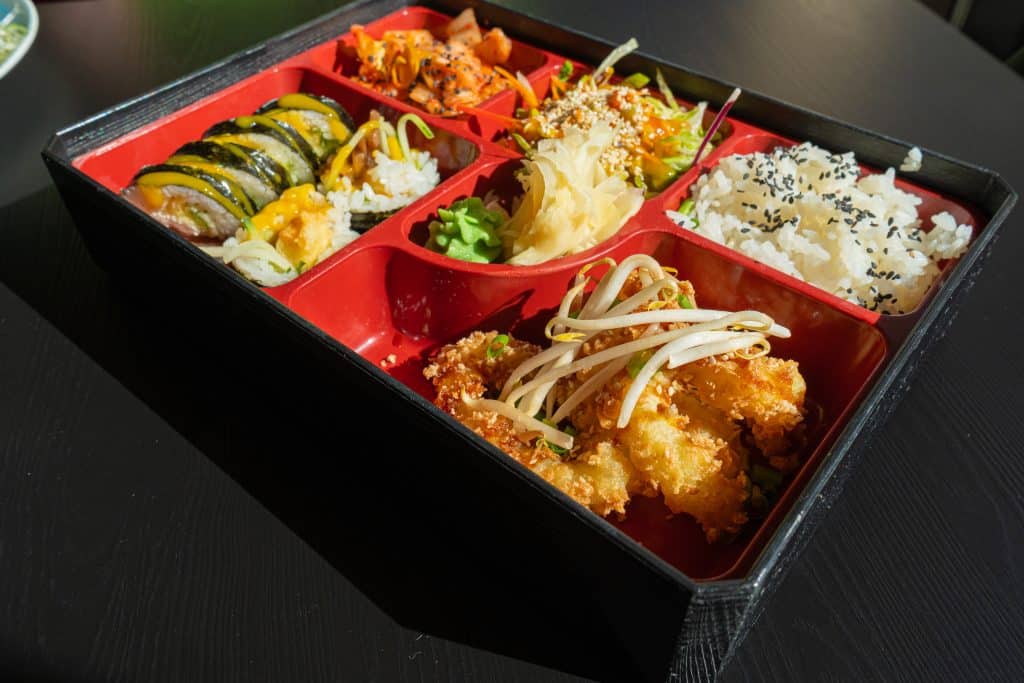
Street Food Encounters: Class Dynamics on Display
Turning Points Amid Food Stalls
Street food scenes in East Asian dramas often happen at critical moments between characters. These casual outdoor settings strip away many social formalities, creating space for honest conversations. Sometimes, a tense rival shares a skewer, or two friends confide over a steaming bowl of tteokbokki. In these moments, relationships shift—rivalries soften, friendships deepen, or love quietly blossoms. The choice to eat in the open, amid noisy crowds, signals vulnerability and openness, elements that are difficult to achieve within the hierarchy of a formal dining table.
Embracing or Avoiding: A Social Statement
Characters’ attitudes toward street food can say a lot about their background and values. Those who eagerly dive into fish cakes or munch on spicy rice cakes often show humility, adaptability, or a desire to connect with everyday life. In contrast, characters who hesitate or decline—often citing hygiene, status, or taste—may be signaling pride, privilege, or discomfort with their surroundings. These differences highlight unspoken divisions in wealth, upbringing, and personal growth. When an elite character learns to savor simple street food, it can mark a turning point in their development.
Symbolic Dishes and Their Meanings
Street foods like tteokbokki, fish cakes, and hotteok carry rich symbolic meaning. Tteokbokki, with its fiery spices, often features in scenes of emotional upheaval or youthful rebellion. Fish cakes, commonly shared from bubbling pots, suggest warmth and unpretentious friendship. Sweets like hotteok evoke nostalgia, hinting at childhood memories or lost innocence. Through these snacks, dramas communicate more than just taste—they use food as a language for memory, class, and change.
As food continues to frame pivotal moments, the focus turns to dining tables at home, where family ties and cultural traditions shape every meal.
Family Dining Tables: The Heart of Dorama Households
Meal Scenes as Emotional Anchors
Family dining tables often act as the emotional centerpiece in East Asian dramas. These scenes are not only about characters eating together. They are crafted moments that reveal the core values, unspoken tensions, and deep bonds within a household. The regular gathering for meals reminds viewers of the importance of togetherness and the comfort found in routine. Through laughter, casual conversation, or even silence, these scenes create a sense of belonging and stability.
Stories Told Through Empty Seats and Untouched Dishes
Visual cues, such as empty chairs or dishes left untouched, are potent storytelling tools. An empty seat can signal the absence of a loved one—due to conflict, loss, or change in family circumstances. Untouched food may highlight a character’s emotional distance or underline unresolved issues at the table. These small details invite viewers to notice what is unsaid, gently guiding them toward the underlying story.
Celebrating Tradition and Marking Milestones
Traditional dishes often appear during special meal scenes, marking family milestones or seasonal holidays. Foods like Korean tteokguk (rice cake soup) for New Year, Japanese osechi for the same occasion, or Chinese longevity noodles for birthdays, carry meanings tied to prosperity, health, and happiness. The act of preparing and sharing these foods shows reverence for family customs, while also passing values and memories from one generation to the next.
Family meals in doramas do more than nourish bodies—they quietly anchor the narrative, shaping character growth and family identity in ways that linger long after the final bite.
Drinking Rituals: Soju, Sake, and Social Bonds
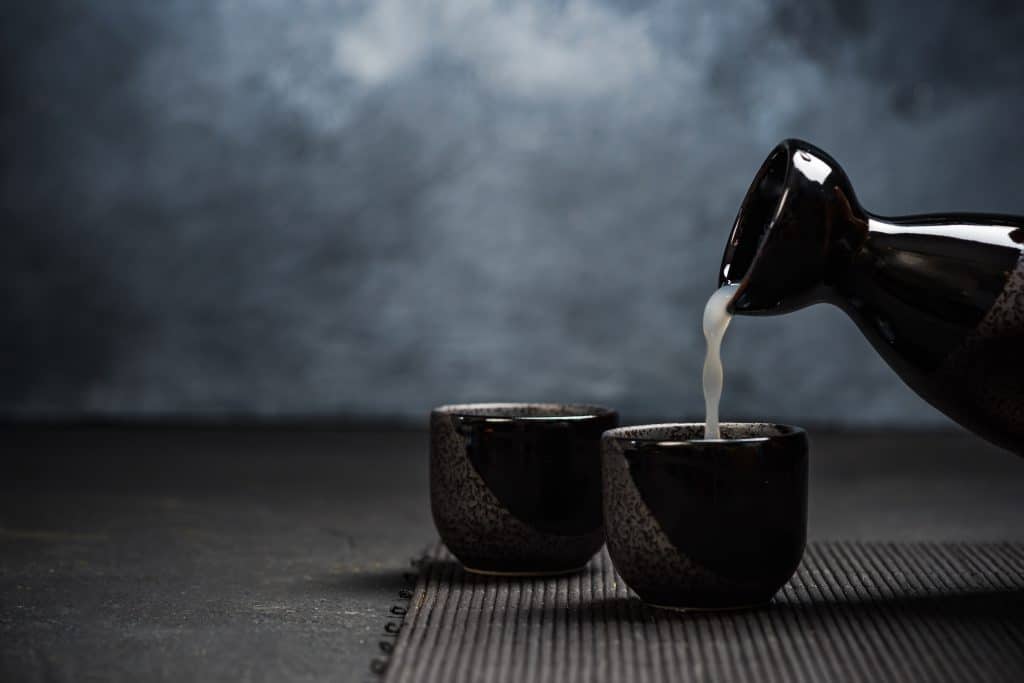
The Unspoken Rules of Pouring
Drinking scenes are a staple in East Asian dramas, often layered with cultural social signals. Pouring a drink for someone else is more than politeness—it reveals respect and the nature of the relationship. For instance, juniors pour drinks for elders with both hands, demonstrating deference and care. If friends exchange drinks, the ritual shows comfort and equality. These small actions set the social stage, making every shared glass a cue to viewers about power and connection.
Vulnerability in Every Sip
Alcohol is a frequent gateway to deeper emotions in doramas. As characters drink, formalities fall away. The setting moves from structured family meals to informal moments of laughter, tears, or honest confession. Walls come down, allowing characters to share secrets or express their true selves. The dim lighting and soft clink of glasses visually hint at this vulnerability, making these scenes a catalyst for growth or reconciliation.
The Meaning in Refusal
Refusing a drink carries heavy meaning. When a character declines a glass from a superior or elder, it often signals defiance, discomfort, or unresolved conflict. This simple gesture can create instant tension or mark a turning point, underlining the seriousness of the moment. Accepting or refusing drink becomes another form of dialogue—one rooted in cultural tradition but fully alive within modern storytelling.
Drinking rituals, with their carefully observed customs and emotional depth, give viewers insight into real cultural and social dynamics. From ritualized respect to honest confession, these scenes use tradition to foster emotional breakthroughs, setting the stage for characters to open new doors in their relationships.
Sweet Confections: Romance and Nostalgia
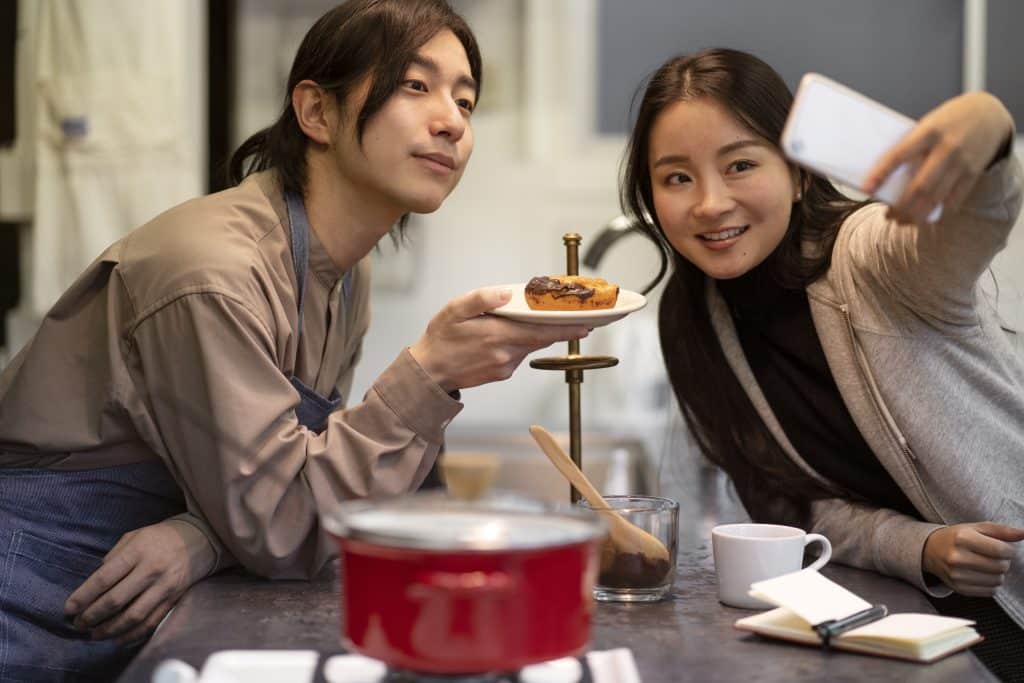
The Cultural Language of Shared Sweets
When two characters share a dessert in a drama, it is rarely just about satisfying a craving. The act of splitting a piece of cake or passing a mochi is often a subtle cultural signal of growing intimacy. Sharing sweets can hint at budding romance, with scenes carefully crafted to capture shy glances or lingering touches. Desserts act as a bridge, allowing characters to express kindness or affection where words might be awkward or impossible. These scenes create a sense of anticipation and tenderness, using something as simple as a spoonful of pudding to indicate a shift in a relationship.
Childhood Treats and the Power of Memory
Traditional confections like mochi, red bean buns, or yakgwa often appear when characters revisit their childhoods. These treats are more than snacks—they carry the emotions of simpler times. When a character bites into a childhood favorite, it can quickly trigger memories of family gatherings, lost loved ones, or moments of personal growth. The taste and aroma of these sweets serve as a shortcut to nostalgia, connecting the present with the past and revealing hidden aspects of a character’s backstory.
East Meets West: Sweets and Character Identity
Desserts in dramas also reflect deeper cultural meanings. Characters who prefer traditional sweets may seem steadfast, family-oriented, or nostalgic. In contrast, those who opt for Western desserts like chocolate cake or parfaits might signal openness, ambition, or a longing for something new. The dessert choices become a quiet expression of character, weaving identity into everyday moments.
As dramas guide viewers through tastes and memories, even the simplest sweet reveals layers of story and emotion, shaping how characters connect and grow.
The Unspoken Cultural Language of Restaurant Selection
Dining Choices as Social Cues
Every restaurant scene in an East Asian drama is carefully chosen to communicate something about its characters. The setting of a meal often provides a silent commentary on a character’s social standing, intentions, or even their inner struggles. High-end restaurants, for example, frequently signal formality, wealth, or a desire to impress. Characters choosing such venues are often making a statement—about business, romance, or aspiration. In contrast, small family-run eateries or cozy cafés usually suggest familiarity, comfort, and emotional vulnerability. The unspoken rules surrounding restaurant choice help viewers sense the power dynamics or emotional distance between characters.
Visual Storytelling through Atmosphere and Lighting
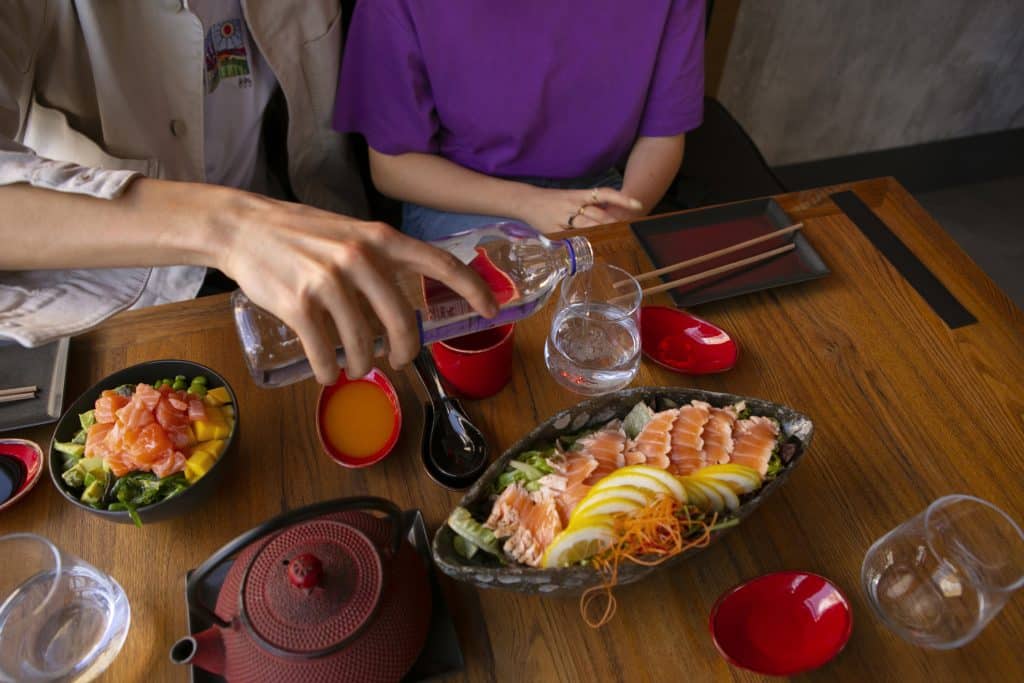
Restaurants are not just physical spaces—they are mood-setters, emotional mirrors, and narrative tools in Japanese doramas.
Directors thoughtfully use every element within a restaurant scene—lighting, table placement, ambient sounds, and even the type of food served—to establish mood and convey unspoken emotions. A brightly lit ramen shop bustling with casual chatter and clinking bowls might frame a character’s first meeting as lighthearted and filled with nervous optimism.
In contrast, a quiet café with subdued lighting and soft piano music might serve as the setting for a tender confession or a moment of painful realization. Even the distance between characters at a table, or the presence of a third, silent customer, can subtly indicate emotional distance, secrecy, or longing.
In doramas, restaurants become more than background—they become extensions of the characters’ emotional states. A cozy, well-lit family diner may represent safety and routine, while a sleek, sterile sushi bar could reflect emotional coldness or isolation. These carefully crafted visual cues allow the audience to “read the air,” absorbing tension or comfort without relying on overt dialogue but on a cultural norm.
By immersing viewers in the sensory experience of these settings, directors draw us into the characters’ private worlds, where what remains unspoken is often the most powerful part of the scene.
The Cultural Significance of Returning
When characters revisit the same restaurant throughout a series, it marks a subtle narrative anchor. Recurring visits often signal personal growth, changes in relationships, or the comfort of familiar rituals. Watching a character’s evolving behavior in a familiar setting gives viewers insight into shifting emotions and priorities, even when words fall short.
Food scenes thus become more than just plot fillers—they are thoughtful expressions of character, cultural and emotional connection, each choice layering new meaning onto the unfolding story.
Conclusion: Developing a Deeper Appreciation for Dorama Food Scenes
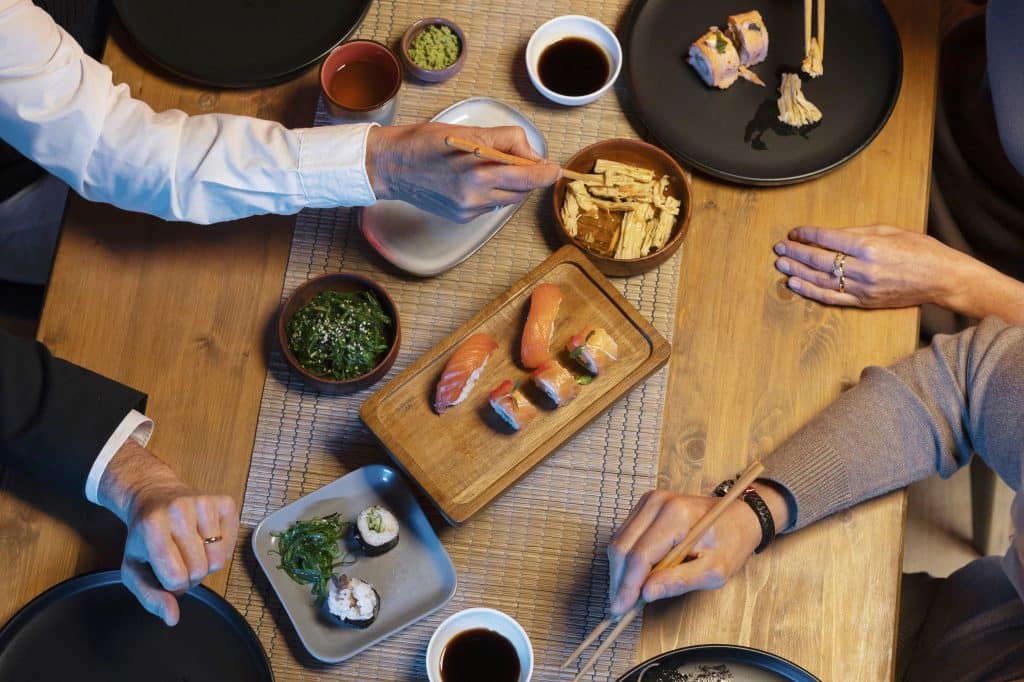
Looking Beyond the Plate
Food scenes in East Asian dramas carry a depth that goes far beyond taste or sustenance. Understanding the layers woven into these moments elevates the viewing experience. Meals are not just background details—they are tools that bring characters closer, unveil hidden emotions, and move stories forward. Through food, doramas reveal unspoken words, with simple acts like serving or refusing a dish offering clues to trust, affection, or discord.
Universal Language, Local Flavor
Although each drama expresses its own unique cultural traditions, the emotional weight carried by shared meals, homemade lunches, or quiet snacks is something viewers around the world can relate to. The act of gathering around a table, presenting a carefully packed bento, or enjoying street food after a long day connects us to the characters’ joys and struggles. This universal language of food transcends cultural barriers and reminds us of the power of everyday rituals.
Visual Storytelling Through Cultural Food
The way food is shown—its colors, arrangement, and even who prepares it—breathes life into each scene. These details help us sense love, ambition, or loneliness without a single line of dialogue. By paying close attention, viewers can enjoy a richer narrative, discovering cultural stories hidden in bowls of ramen, sweet confections, or silently passed soju glasses.
In the end, food remains one of the most compelling and versatile cultural storytelling devices in East Asian television. Its symbolism offers a window into character and cultural norm, making each meal a memory to savor long after the credits roll.
| Country | Dorama/Drama Type | Cultural Role of Food | Examples in Doramas |
|---|---|---|---|
| 🇯🇵 Japan | Japanese Doramas | Food represents care, routine, and emotional communication. Bento boxes often act as symbols of affection or reconciliation. | Midnight Diner, Shinya Shokudo, Samurai Gourmet |
| 🇰🇷 South Korea | K-Dramas | Shared meals reflect family bonds, hierarchy, and healing. Cooking scenes often lead to character bonding and personal growth. | Let’s Eat, Itaewon Class, Hospital Playlist |
| 🇨🇳 China | C-Dramas | Food is linked to hospitality, tradition, and family heritage. Cooking is often portrayed as a bridge between generations. | Flavorful Origins, Ode to Joy, Dine With Love |

